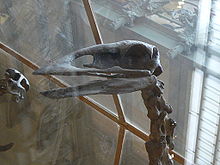Thalia
Thalia and Ganesh keep me company in my Tuxedo Park office.
They arrived together in boxes sent from the Metropolitan Museum of Art gift shop years ago and have been with me ever since, throughout days and nights, in light and heavy weather, unchanging.
To some extent, their constancy, serenity and good cheer have preserved me (although I don't look half as good as they do).
Like Jane's favorite stuffed animal, Tiger (born in China and returned to China to bring Jane home), they guard the house and are precious and eternal.
All manner of good news and bad news -- Princess Diana's shocking car crash; Roxy Music's reunion; September 11th; jobs becoming former jobs and new jobs replacing them; hurricanes, tsunamis and local politics; War and Rumours of war -- arriving at any time in the Day or Night:
Thalia and Ganesh learn everything first chez nous and they listen intently to the Tuxedo forest sounds every night, unlike I, unfazed.
Ganesh
Reader Notes:
Thalia: "the joyous, the flourishing" (from Ancient Greek: θάλλειν, thállein; "to flourish, to be verdant") was the muse who presided over comedy and idyllic poetry. In this context, her name means “flourishing,” because the praises in her songs flourish through time. She was the daughter of Zeus and Mnemosyne, the eighth-born of the nine Muses.
According to pseudo-Apollodorus, she and Apollo were the parents of the Corybantes, Other ancient sources, however, gave the Corybantes different parents.
She was portrayed as a young woman with a joyous air, crowned with ivy, wearing boots and holding a comic mask in her hand. Many of her statues also hold a bugle, a trumpet (both used to support the actors' voices in ancient comedy), a shepherd’s staff, or a wreath of ivy.
Ganesh: also spelled Ganesa or Ganesha, also known as Ganapati, Vinayaka, and Pillaiyar, is one of the deities best-known and most widely worshipped in the Hindu pantheon. His image is found throughout India and Nepal. Hindu sects worship him regardless of affiliations. Devotion to Ganesh is widely diffused and extends to Jains, Buddhists, and beyond India.
Although he is known by many other attributes, Ganesh's elephant head makes him easy to identify. Ganesh is widely revered as the Remover of Obstacles and more generally as Lord of Beginnings and Lord of Obstacles, patron of arts and sciences, and the deva of intellect and wisdom. He is honored at the beginning of rituals and ceremonies and invoked as Patron of Letters during writing sessions.
Several texts relate mythological anecdotes associated with his birth and exploits and explain his distinct iconography.
Ganesh emerged a distinct deity in clearly recognizable form in the 4th and 5th centuries CE, during the Gupta Period, although he inherited traits from Vedic and pre-Vedic precursors.His popularity rose quickly, and he was formally included among the five primary deities of Smartism (a Hindu denomination) in the 9th century. A sect of devotees called the
Ganapatya, who identified Ganesha as the supreme deity, arose during this period. The principal scriptures dedicated to Ganesh are the
Ganesha Purana, the
Mudgala Purana, and the
Ganapati Atharvashirsa. In his praise the
Ganesha Chalisa is sung.
Photographic credit: Jane Butler Roberts, Strange Phase Studios, Tuxedo Park, NY; Berwyn, PA; Bangalore India




















































